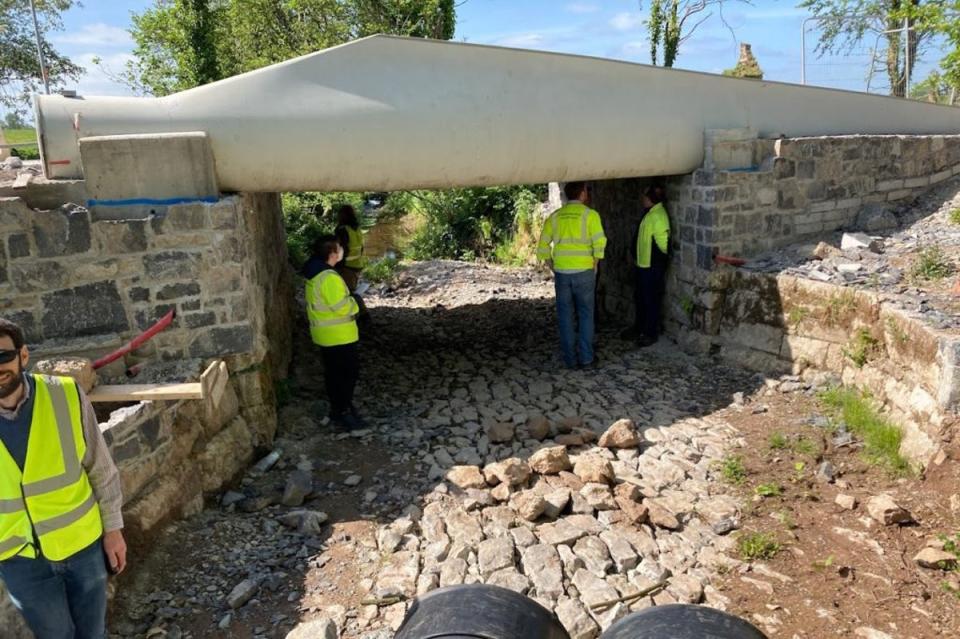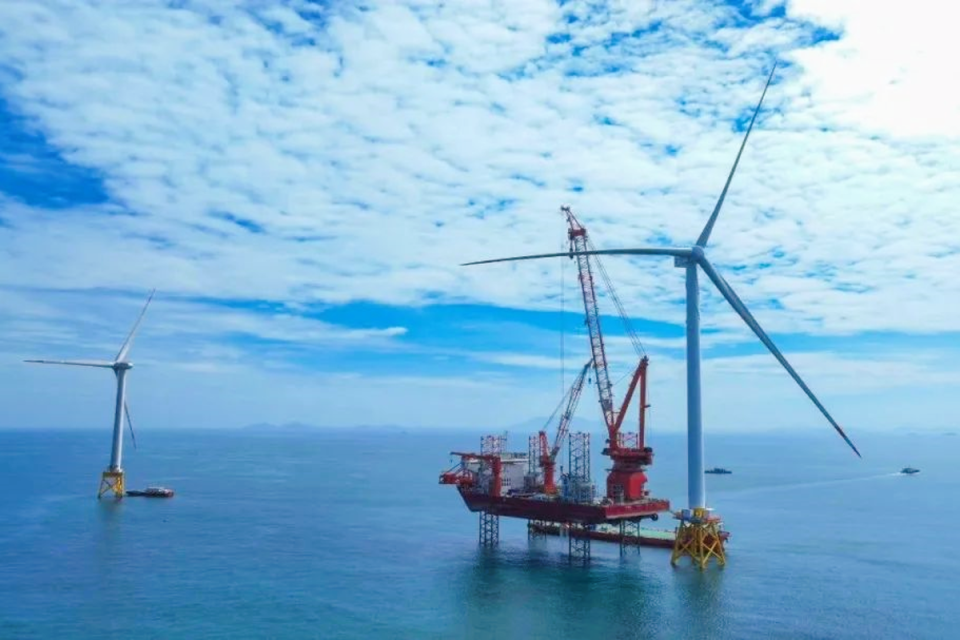Wind turbine blades repurposed into bridges

Engineers have figured out how to repurpose disused wind turbine blades to serve as bridges capable of supporting up to 30 tonnes of weight.
Turbine blades have a lifespan of around 20 to 25 years, meaning hundreds of wind farms set up at the start of the century are now being upgraded.
Decommissioned blades are typically sent to landfill or incinerated, with the thousands of non-biodegradable units now posing a major environmental challenge.
In an effort to address the issue, five universities and research institutes in Ireland, Northern Ireland and the US set up the Re-Wind Network, which has come up with several ways the blades can be recycled.
Potential solutions include bus shelters, street furniture and telecommunications towers, however bridges already offer a practical way to repurpose the blades, with two footbridges successfully built in Draperstown and Cork.
“With so many of these blades due to reach the end of their lifespan, we need to find ways to transform them into something useful,” said Jennifer McKinley, a professor at Queen’s University Belfast’s School of Natural and Built Environment.
“I am delighted that by working together we’ve been able to find a way to repurpose wind turbine blades. This can only be a good thing, as without intervention they would end up in landfill or they would have to be incinerated.”
A third bridge is set to be built in Atlanta, Georgia, before the research team turn their focus towards increasing the length and size of the bridges.

The researchers estimate that there will be around 8.6 million tonnes of scrapped wind turbine blades within the next 20 years, though the glass fibre reinforced polymer material could prove useful for building a huge range of objects, like motorway noise barriers and playground equipment.
Three of the engineers from the Re-Wind Network project have also formed a spin-out startup called BladeBridge that will look to commercialise the idea, while also looking for new ways to reuse old turbine blades.
“We are partnering with well-known designers here in Ireland to create a portfolio of durable and sustainable products, such as greenway furniture and bridges,” said BladeBridge co-founder Dr Angie Nagle.

 Yahoo Finance
Yahoo Finance 